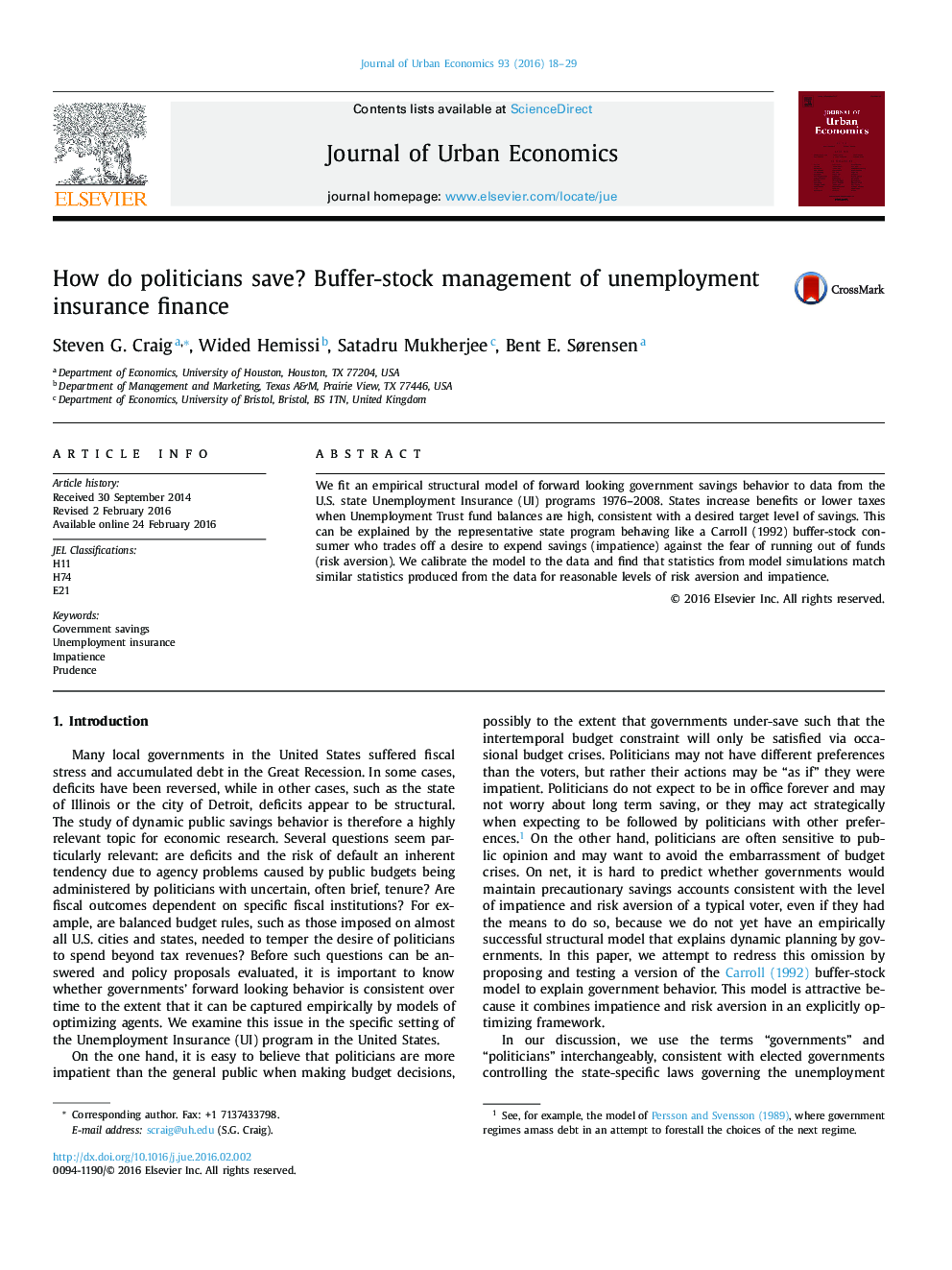| Article ID | Journal | Published Year | Pages | File Type |
|---|---|---|---|---|
| 970590 | Journal of Urban Economics | 2016 | 12 Pages |
Abstract
We fit an empirical structural model of forward looking government savings behavior to data from the U.S. state Unemployment Insurance (UI) programs 1976–2008. States increase benefits or lower taxes when Unemployment Trust fund balances are high, consistent with a desired target level of savings. This can be explained by the representative state program behaving like a Carroll (1992) buffer-stock consumer who trades off a desire to expend savings (impatience) against the fear of running out of funds (risk aversion). We calibrate the model to the data and find that statistics from model simulations match similar statistics produced from the data for reasonable levels of risk aversion and impatience.
Related Topics
Social Sciences and Humanities
Economics, Econometrics and Finance
Economics and Econometrics
Authors
Steven G. Craig, Wided Hemissi, Satadru Mukherjee, Bent E. Sørensen,
